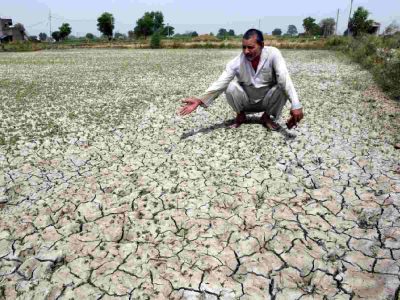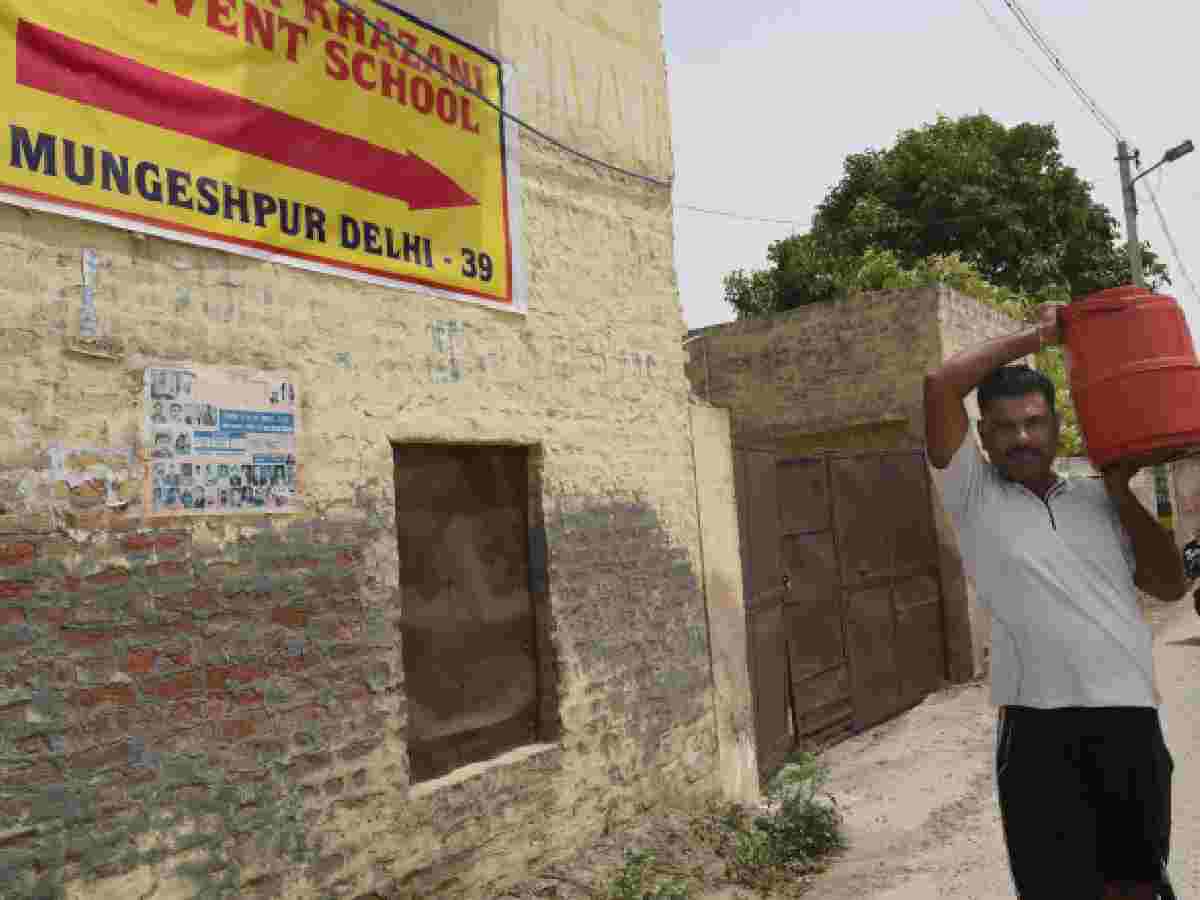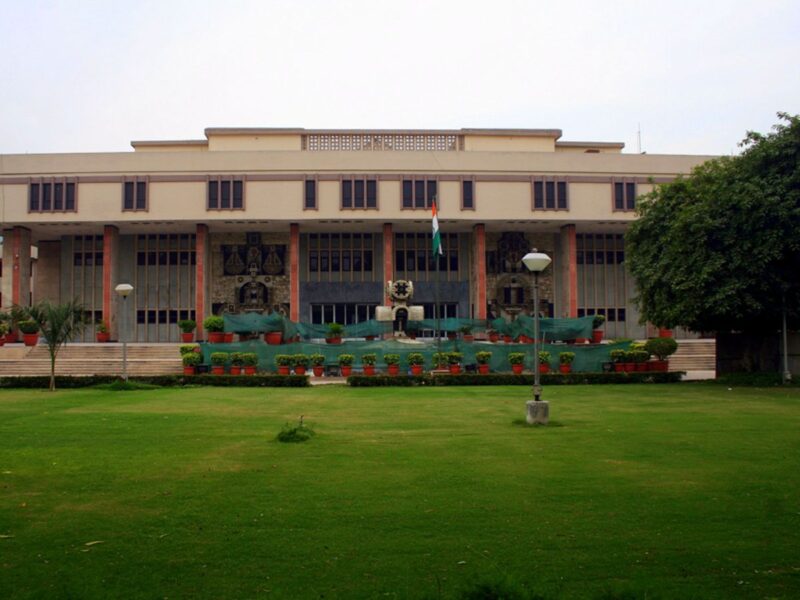Urbanisation : Temperature in Mungeshpur, an urbanised village, reached close to 50 degrees Celsius multiple times in May 2024, making it the hottest place in the national capital.
The village, situated in north-west part of Delhi near the Haryana border, is home to more than 11,000 people and several industries.
The soaring mercury has made life difficult for the residents, impacting their day-to-day activities. The crop yield in the area has also reduced.
The village recorded a maximum temperature of 48.8 degrees on May 27, 49.9 degrees on May 28, and 52.9 degrees on May 29.
Sanjeev Jha, who was walking to work in the scorching heat, said, “A lot has changed over the past 10 years in the locality. Earlier, there used to be a lot of greenery and open spaces. However, the transformation of farm fields into residential areas has significantly altered the landscape.
“Urbanisation has led to a gradual decline in green spaces, which is a major factor contributing to the rising temperatures in the area,” said Jha, who is living in the area for the past decade.
When Patriot visited the village, it seemed deserted as the residents stayed indoors during the scorching afternoon heatwave. Only a few opened their shops but there were no customers.
Amid the sweltering weather, poor people reside in clay houses where heat gets trapped.
Rakesh, a vegetable vendor who was roaming in the streets of Mungeshpur to earn a living, said, “I have to step out of the house in this heatwave to earn bread for my family. Urbanisation of the area has majorly affected weather conditions. This heat makes it very difficult for people like us to work. My hands burn in this sunlight following which my whole body gets rashes.”
Mungeshpur’s proximity to the desert state of Rajasthan as well as reduction in farm area has contributed to the rise in heat, say experts.
RK Jenamani, a scientist at the Indian Meteorological Department, explained that Mungeshpur’s location makes it hotter than other parts of Delhi. Additionally, industrial factories in the nearby village of Narela exacerbate the situation.
Mahesh Palawat, Vice President of Meteorology and Climate Change at Skymet Weather, said, “The green belt in the area has reduced, which is the major factor in making the region the hottest in the national capital. The other factor is concretisation.”
Residents have been struggling over the past 15 days with severe water shortages, receiving water for only 10 minutes each day, while water tankers rarely visit the area.
Many locals told Patriot that for drinking water they have to either rely on tubewells or water tankers, both of which are nearly a kilometre away.
On May 29, residents of the village endured a 12-hour power cut from 11 pm to 11 am.
Sarita Devi, 46, said, “Power went off at 11 pm and returned only at 11 am. It was very difficult for us to survive these 12 hours.”
A mother, who wished to remain anonymous, shared the challenges she faces while feeding her two-year-old daughter.
“It’s very difficult to feed her. The extreme heat has made her sick, and she’s been vomiting for the past two days.”

A father and son duo, 50-year-old Suresh and 18-year-old Akshay, own a confectionery shop and endure the heat, and dust daily, working nonstop for 12 hours without a fan. They said they are not that worried about getting a heat-stroke.
They are more worried about their survival.
“We have to feed ourselves.”
Notably, heat-stroke has already claimed two lives in Delhi.
Ganga Sharan, an 80-year-old lying on a charpoy, said, “I have been residing here all my life, but I am witnessing this much temperature for the first time. This is because of the urbanisation of the area. The government has removed the greener area in the locality out of greed and set up factories and industries, resulting in climate change in the area.”
Speaking to Patriot, Dr Rishiraj Sinha, All India General Secretary of the Federation of All India Medical Association (FAIMA), said that heat-stroke results from prolonged exposure to high temperatures and dehydration, which leads to failure of the body’s temperature control system.
“The medical definition of heat-stroke is a core body temperature greater than 104° F, with complications and common symptoms including nausea, anxiety, dizziness, fainting, confusion, disorientation, and sometimes loss of consciousness,” Sinha asserted.
“Heat-stroke often happens as a progression from milder heat-related illnesses such as heat cramps, heat syncope (fainting),” he emphasised.
Also Read: Delhi almost touches 50 degree C as heatwave intensifies
Record temperature glitch
Though the India Meteorological Department (IMD) on May 29 reported that Mungeshpur witnessed a maximum temperature of 52.9 degrees Celsius making it the highest ever in the national capital, it later said that there was some technical glitch in the sensor and the actual temperature was three notches less.
Union Minister of Earth Sciences Kiren Rijiju announced that a team from the IMD investigated the weather station in Mungeshpur, Delhi, and discovered a sensor error.
On Saturday, Rijiju clarified that the weather station, which recorded an unprecedented temperature of 52.9 degrees Celsius on May 29, was not functioning correctly due to this error. In a post on X, he expressed gratitude for the diligent work of the IMD scientists and assured that corrective measures have been implemented.
On 29th May 2024, Mungeshpur's AWS reported a temperature of 52.9°C, our @Indiametdept team quickly investigated and found a 3°C sensor error. Corrective measures are now in place.
Thanks to our brilliant scientists for their relentless dedication as together, we're making sure… pic.twitter.com/Wn52Dihk8n
— Kiren Rijiju (@KirenRijiju) June 1, 2024
An expert team was dispatched to examine the AWS, which confirmed that the sensor was reporting temperatures about three degrees higher than the standard instruments..
IMD Director-General Mrutyunjay Mohapatra said that the faulty sensor would be replaced in a few days and that AWS devices would be examined and corrected individually if necessary.
Rijiju shared a draft report on the incident, highlighting the sensor discrepancy and the steps taken to ensure the accuracy of future weather reports.





